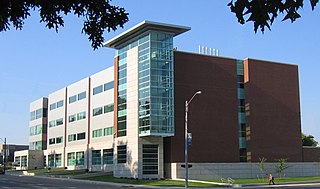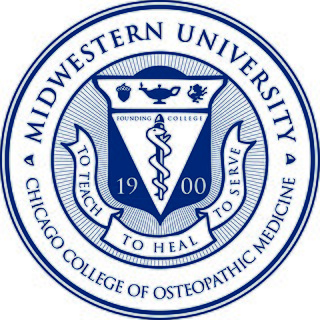
Charles Richard Drew was an American surgeon and medical researcher. He researched in the field of blood transfusions, developing improved techniques for blood storage, and applied his expert knowledge to developing large-scale blood banks early in World War II. This allowed medics to save thousands of Allied forces' lives during the war. As the most prominent African American in the field, Drew protested against the practice of racial segregation in the donation of blood, as it lacked scientific foundation, and resigned his position with the American Red Cross, which maintained the policy until 1950.

Baylor College of Medicine (BCM) is a private, independent health sciences center in Houston, Texas within the Texas Medical Center, the world's largest medical center. BCM is composed of four academic components: the School of Medicine, the Graduate School of Biomedical Sciences; the School of Health Professions, and the National School of Tropical Medicine.

The Medical University of South Carolina (MUSC) is a public medical school in Charleston, South Carolina. It opened in 1824 as a small private college aimed at training physicians. It is one of the oldest continually operating schools of medicine in the United States and the oldest in the Deep South. The school's main building was designed by Charleston architect Albert W. Todd.

Midwestern University (MWU) is a private medical and professional school with campuses in Downers Grove, Illinois and Glendale, Arizona. As of the 2020-21 academic year, a total of 2,987 students were enrolled at the Downers Grove campus and 3,902 were enrolled at the Glendale campus.

The University of Tennessee Health Science Center (UTHSC) is a public medical school in Memphis, Tennessee. It includes the Colleges of Health Professions, Dentistry, Graduate Health Sciences, Medicine, Nursing, and Pharmacy. Since 1911, the University of Tennessee Health Science Center has educated nearly 57,000 health care professionals. As of 2010, US News and World Report ranked the College of Pharmacy 17th among American pharmacy schools.

Augusta State University was a public university located in Augusta, Georgia, United States. On August 10, 2012, Augusta State merged with Georgia Health Sciences University to form Georgia Regents University, which would later be known as Augusta University.
There are a number of professional degrees in dentistry offered by dental schools in various countries around the world.

The University of Khartoum is a public university located in Khartoum, Sudan. It is the largest and oldest university in Sudan. UofK was founded as Gordon Memorial College in 1902 and established in 1956 when Sudan gained independence. Since that date, the University of Khartoum has been recognized as a top university and a high-ranked academic institution in Sudan and Africa.

Augusta University is a public research university and academic medical center in Augusta, Georgia. It is a part of the University System of Georgia and has satellite medical campuses in Savannah, Albany, Rome, and Athens. It employs over 15,000 people, has more than 56,000 alumni, and is accredited by the Southern Association of Colleges and Schools.

University of Iowa Hospitals and Clinics (UIHC) is an 811-bed public teaching hospital and level 1 trauma center affiliated with the University of Iowa. UI Hospitals and Clinics is part of University of Iowa Health Care, a partnership that includes the University of Iowa Roy J. and Lucille A. Carver College of Medicine and the University of Iowa Physicians group practice.

Western University of Health Sciences (WesternU) is a private medical school and health sciences university with its main campus in Pomona, California, with an additional osteopathic medical school in Lebanon, Oregon. With an enrollment of 3,814 students (2020–21), WesternU offers more than twenty academic programs in multiple colleges. Dr. Robin Farias-Eisner became the university's third president in 2022.
A.T. Still University (ATSU) is a private medical school based in Kirksville, Missouri, with a second campus in Arizona. It was founded in 1892 by Dr. Andrew Taylor Still and was the world's first osteopathic medical school. It is accredited by the Higher Learning Commission. ATSU includes three campuses on 200 acres with six schools and colleges.

Ricardo Azziz is a Uruguayan-American obstetrician/gynecologist, reproductive endocrinologist and executive administrator who has served as the chief executive officer of the American Society for Reproductive Medicine since 2020.

The Medical District of Augusta, Georgia, is a special-use zoning district located between downtown and Summerville. The district is bounded to the north by Walton Way, to the east by R.A. Dent Boulevard, to the west by Heard Avenue, and to the south by Wrightsboro Road. The district comprises a number of medical facilities and private medical companies.

The Ohio State University College of Dentistry is one of the graduate and professional schools of The Ohio State University. The college is the fourth largest public dental school in the U.S. and consists of nine academic divisions representing all major dental specialties. In addition to the Doctor of Dental Surgery (D.D.S.) and Bachelor of Science in Dental Hygiene degrees, the Ohio State College of Dentistry offers specialty training programs, advanced training programs, MS programs, and a Ph.D. program in Oral Biology. Outreach and Engagement activities include over 60 active programs and more than 42 extramural sites, which continue to expand.
The Oregon Health & Science University School of Dentistry is the dental school of Oregon Health & Science University. It is located in the city of Portland, Oregon, United States. It is the only dental school in Oregon.
The University of Louisville School of Medicine at the University of Louisville is a medical school located in Louisville, Kentucky, United States. Opened as the Louisville Medical Institute in 1837, it is one of the oldest medical schools in North America and the 9th oldest in the United States.

The Medical College of Georgia is the flagship medical school of the University System of Georgia, the state's only public medical school, and one of the top 10 largest medical schools in the United States. Established in 1828 as the Medical Academy of Georgia, MCG is the oldest and founding school of Augusta University and played a role in the establishment of the American Medical Association and the standardization of medical practices. It is the third-oldest medical school in the Southeast and the 13th oldest in the nation. With 22 departments, it offers both a Doctor of Medicine (MD) as well as MD-PhD, MD-MPH, and MD-MBA degrees. Its national ranking in research is 75, and its ranking in primary care is 91, both out of 191 ranked medical schools.

Chicago College of Osteopathic Medicine (CCOM) is the medical school of Midwestern University in Downers Grove, Illinois. CCOM grants the Doctor of Osteopathic Medicine D.O. academic degree and is accredited by the American Osteopathic Association's Commission on Osteopathic College Accreditation (COCA).
















